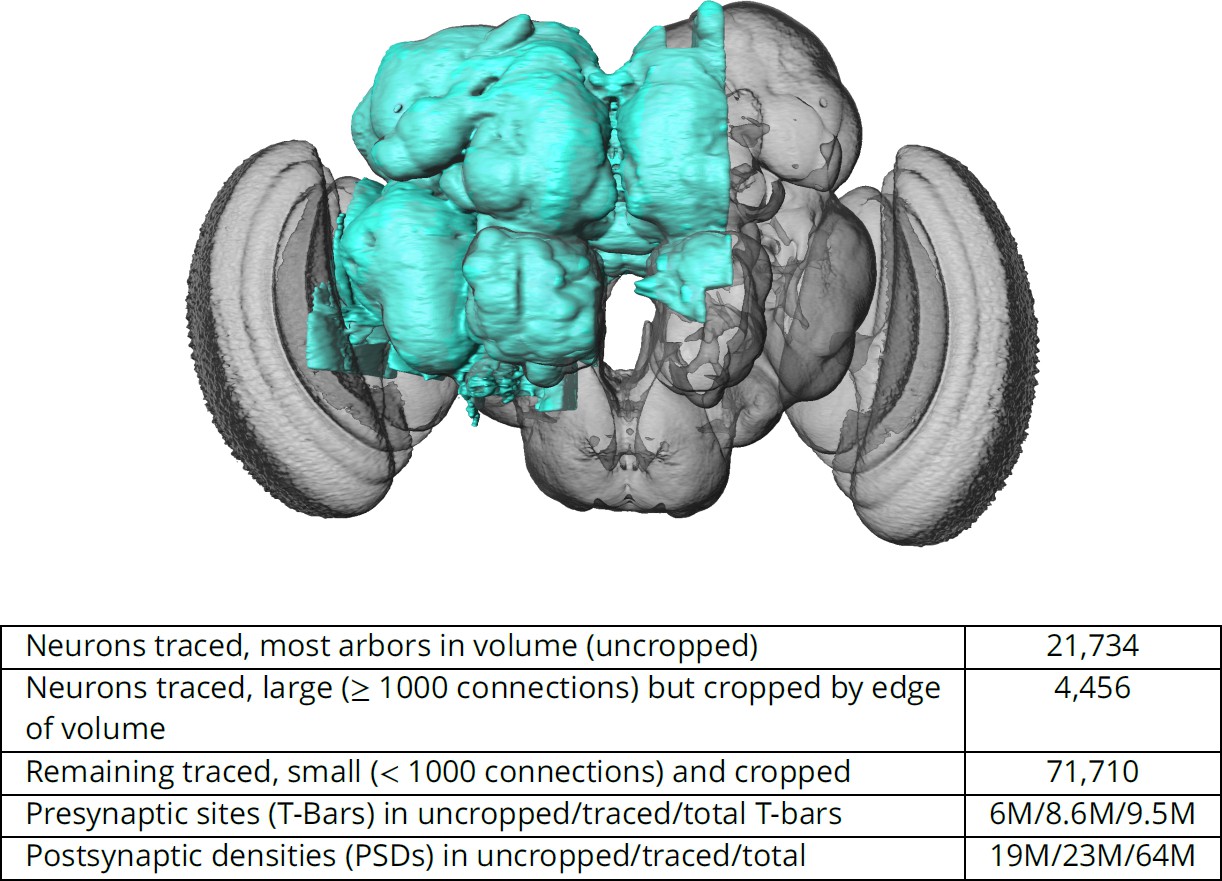Large-volume EM and connectomics - An (incomplete) history of neuronal connectomics
ZooCELL 1st Practical Course | 03-14 February 2025, COS and EMBL, Heidelberg
Gáspár Jékely
Centre for Organismal Studies, Heidelberg University
@jekely@biologists.social
An (incomplete) history of neuronal connectomics
“Its technology - who are we kidding?”
Winfried Denk
Towards the first connectome

- Caenorhabditis elegans nematode worm
- 1 mm long
- hermaphrodites and males
The mind of the worm
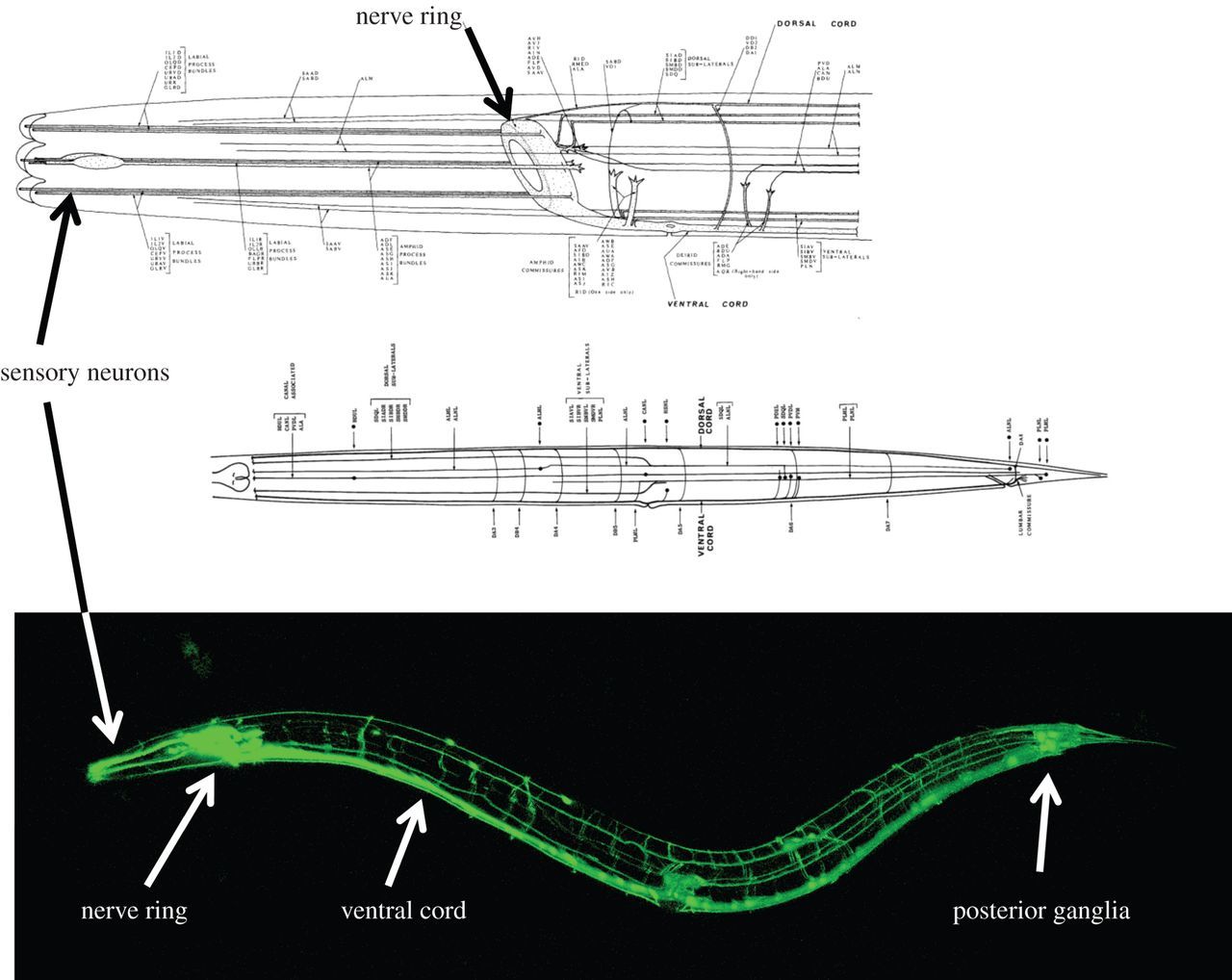
- the hermaphrodite wiring diagram
- 5,000 chemical synapses, 2,000 neuromuscular junctions and 600 gap junctions
- from John White’s start in 1969 to completion, the project took 15 years
- a 340 page magnum opus by Sydney Brenner, John White and others
Manual annotation and naming of all cell types
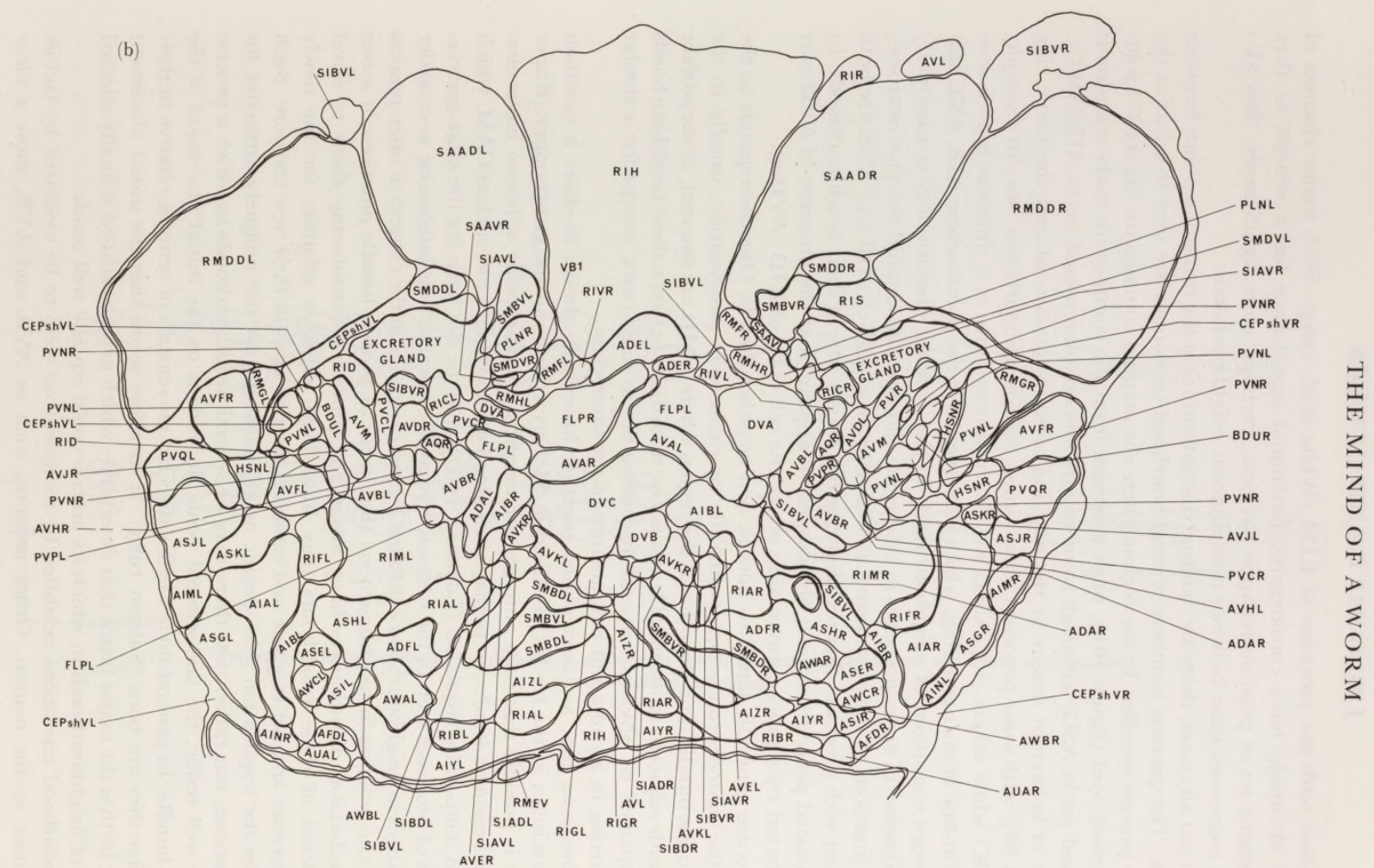
- transverse section through the ventral ganglion
- each cell type individually identified and named
- left-right stereotypy
The computational challenge
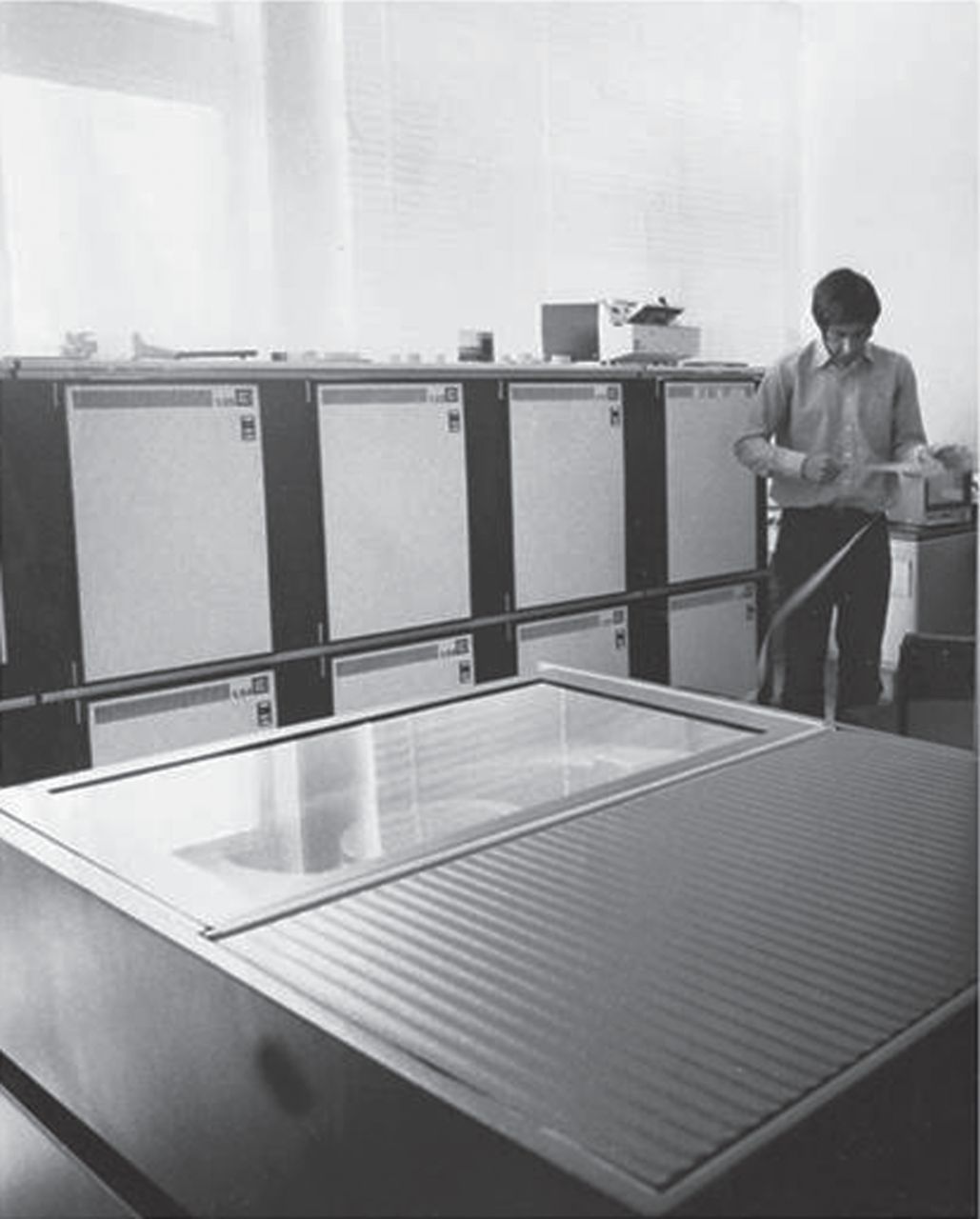
- John White standing next to the Modular I computer
- the box in front is the storage disk drive (22 MB)
- room-sized computer with only 64 K of memory
- input was punched paper tape
- capacity was not enough!
Back to manual
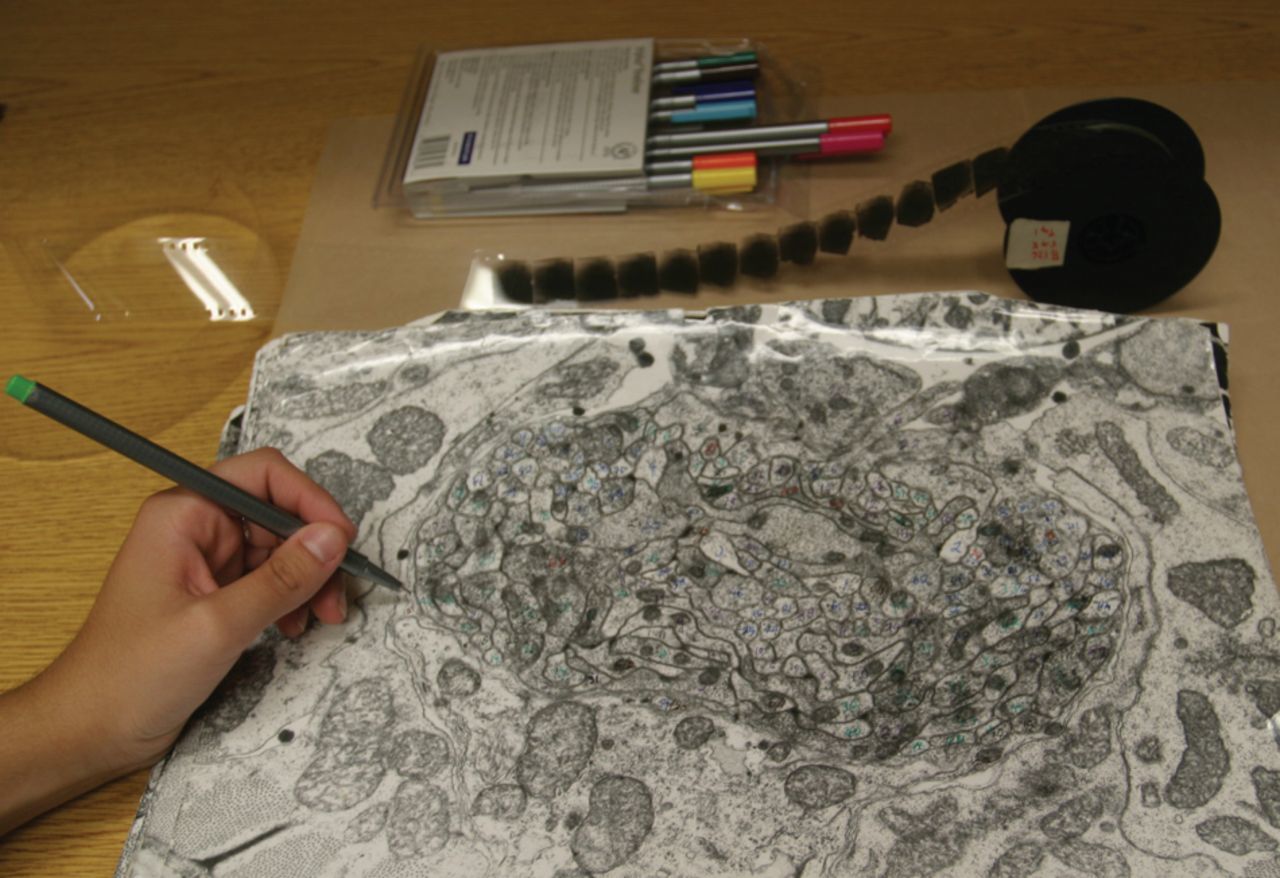
- large, 12 × 16 inch glossy prints
- marked with Rotring Rapidograph coloured pens
- trace neurons through the stack of images
- movie film reel of serial EM images in the background
The first circuit diagrams
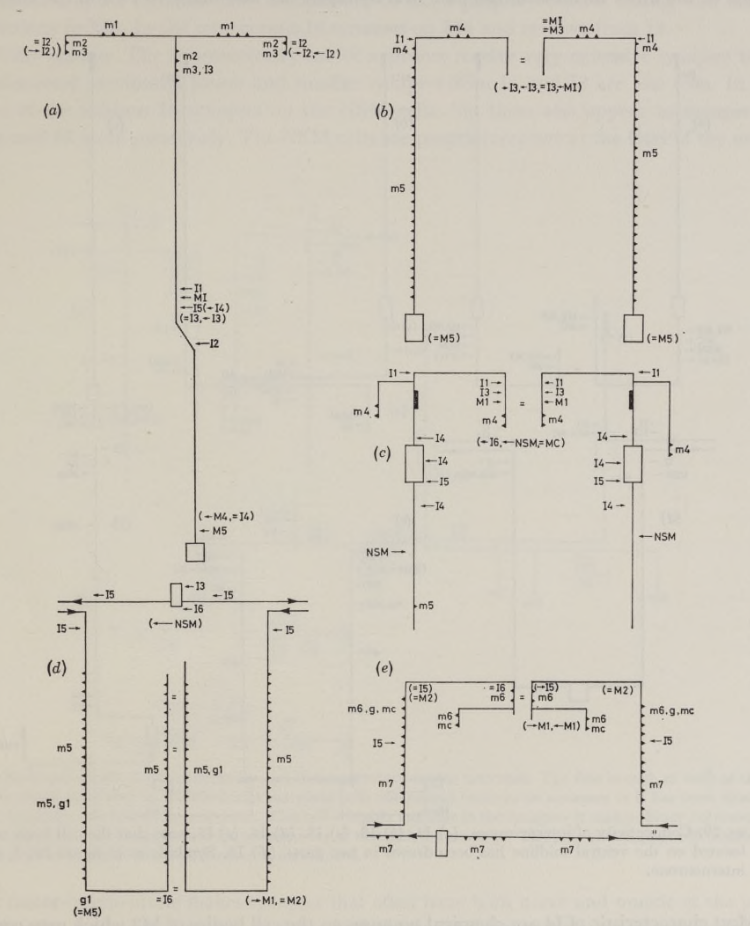
- C. elegans pharynx nervous system
- 20 neurons
- the connectivity of these neurons has been described at the level of synapses
The first circuit diagrams
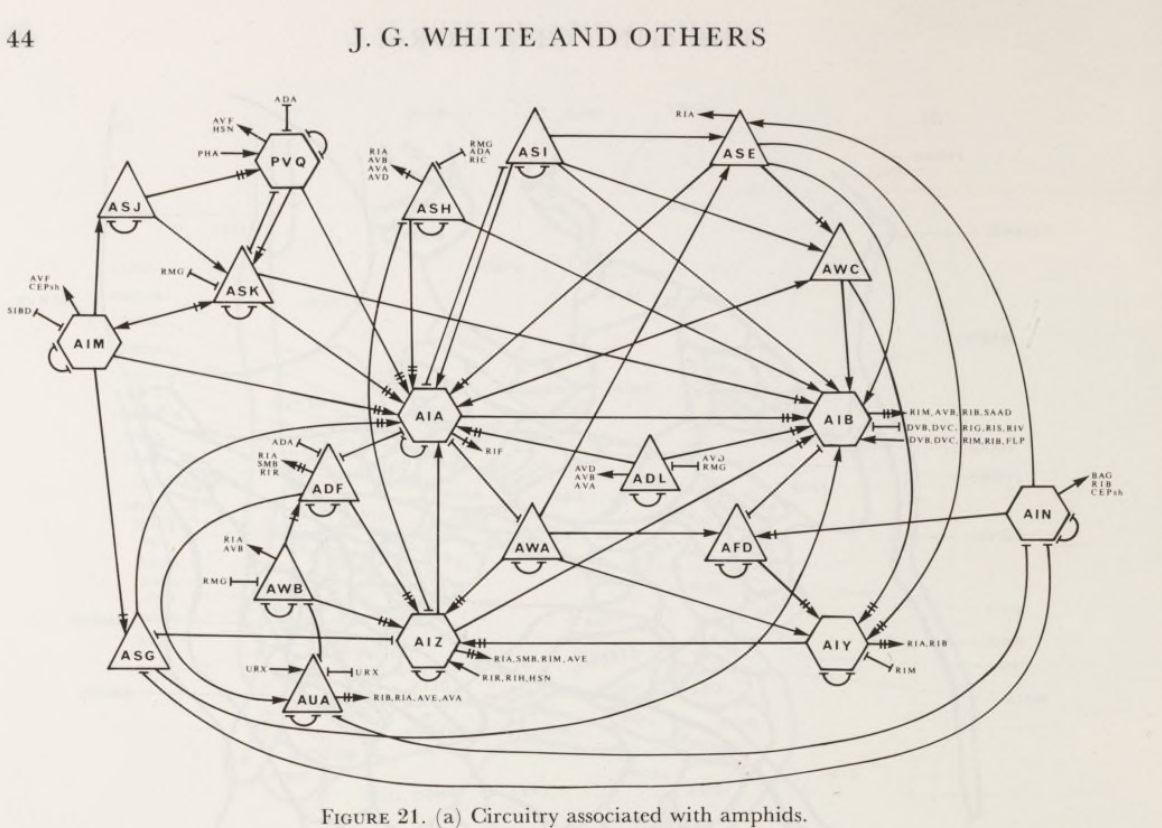
- hermaphrodite nervous system
- a total complement of 302 neurons
- invariant structure
- neurons with similar morphologies and connectivities have been grouped together into 118 classes
- ~5000 chemical synapses, ~2000 neuromuscular junctions and ~600 gap junctions
- several detailed circuit diagrams
Serial Block-Face Scanning Electron Microscopy
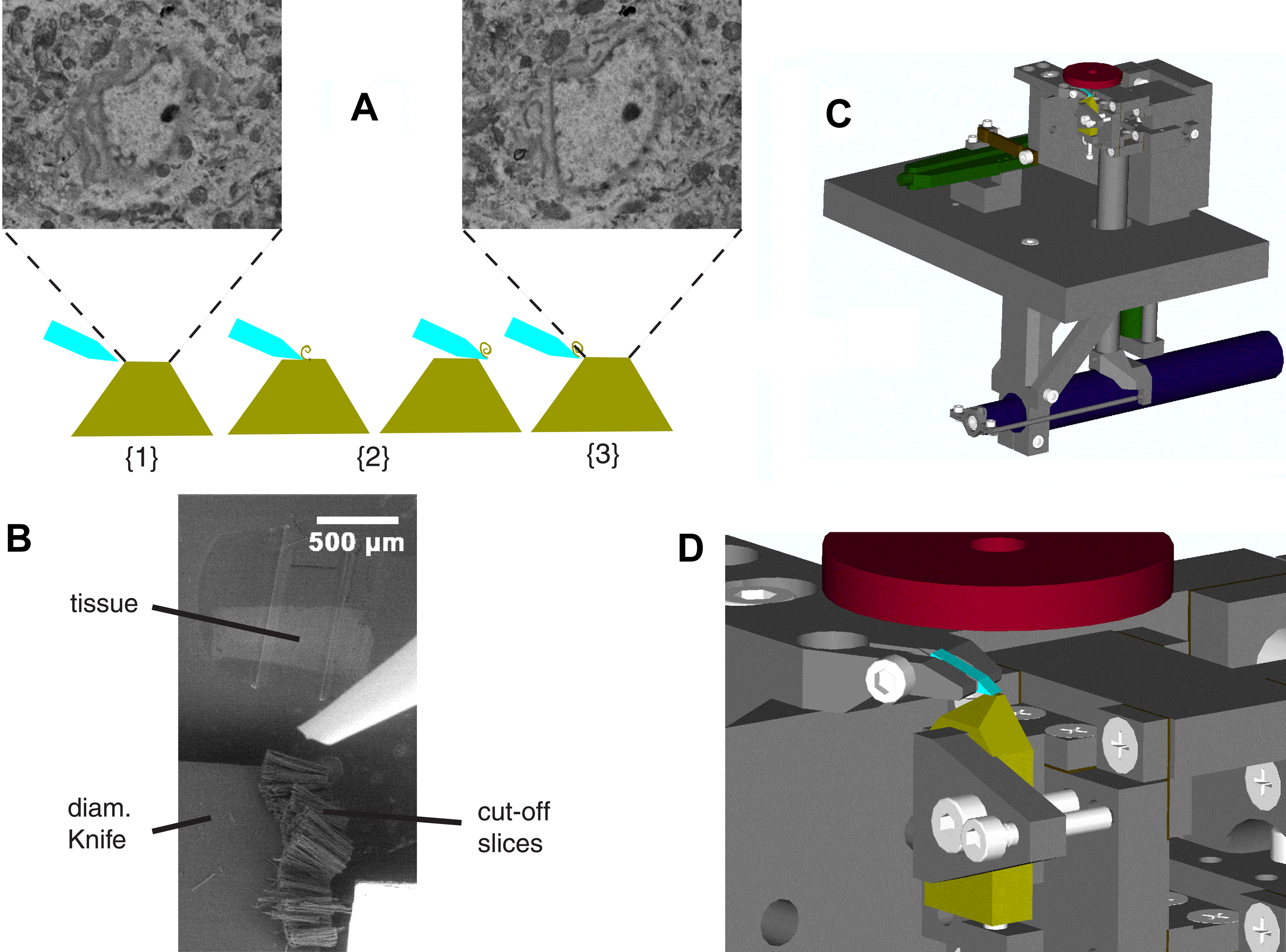
- automated block-face imaging
- combined with serial sectioning inside the chamber of a SEM
- backscattering contrast to visualise heavy-metal staining
Axon tracing is possible
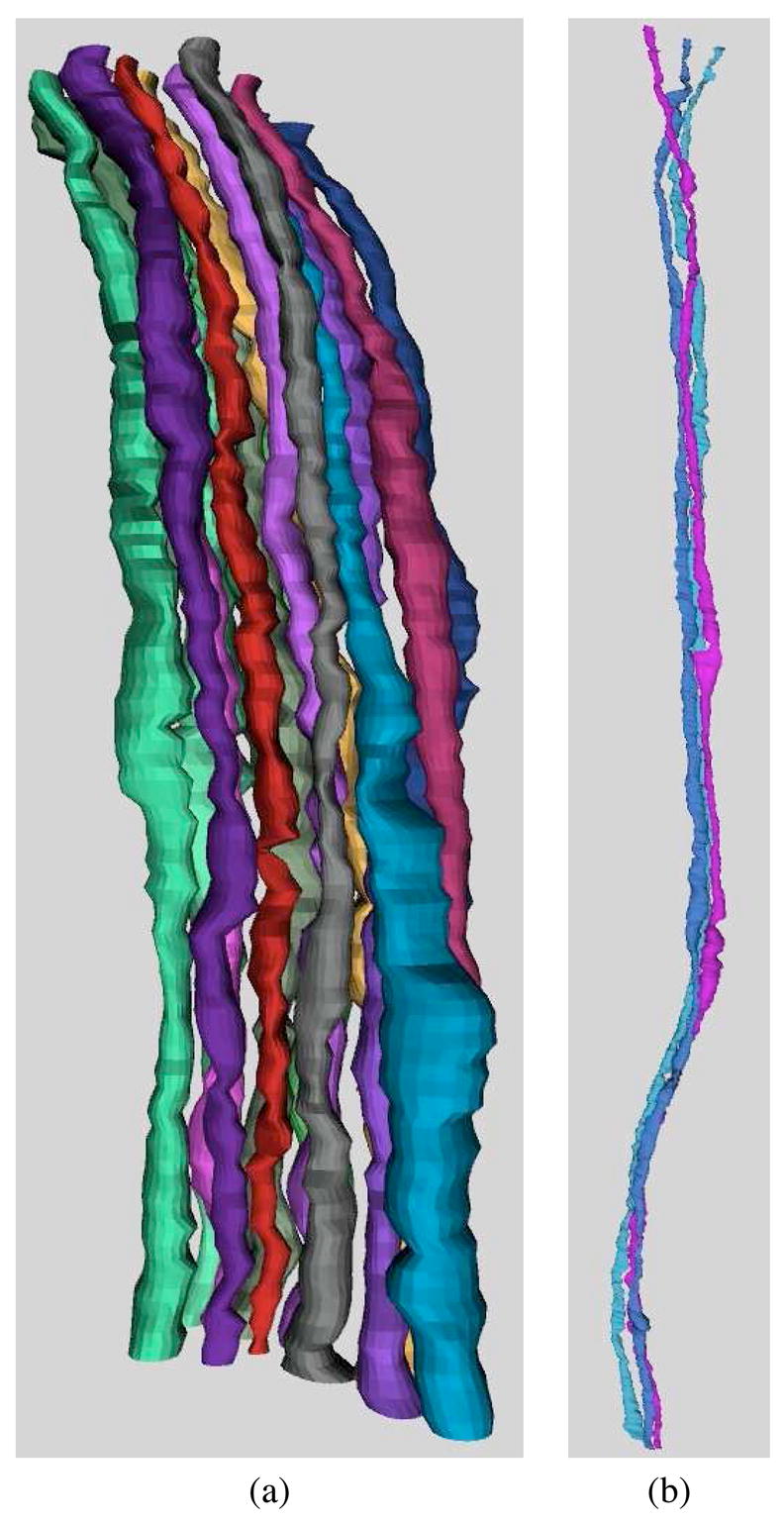
- tracking axons across large distances in volumes
Method improvements
- Rotring Rapidograph coloured pens for tracing!
- automated sectioning and imaging (SBEM, FIB-SEM)
- better cameras with larger FoV (e.g. 4k x 4k pixels)
- autoloader and camera array for TEM
- improved SBEM embedding (conducting block)
- enhanced FIB-SEM
- multi-beam SEM
- automated TEM with beam deflection
- ATUM-TOME
- improvements in alignments, segmentation, proofreading
- …
Improved TEM methods
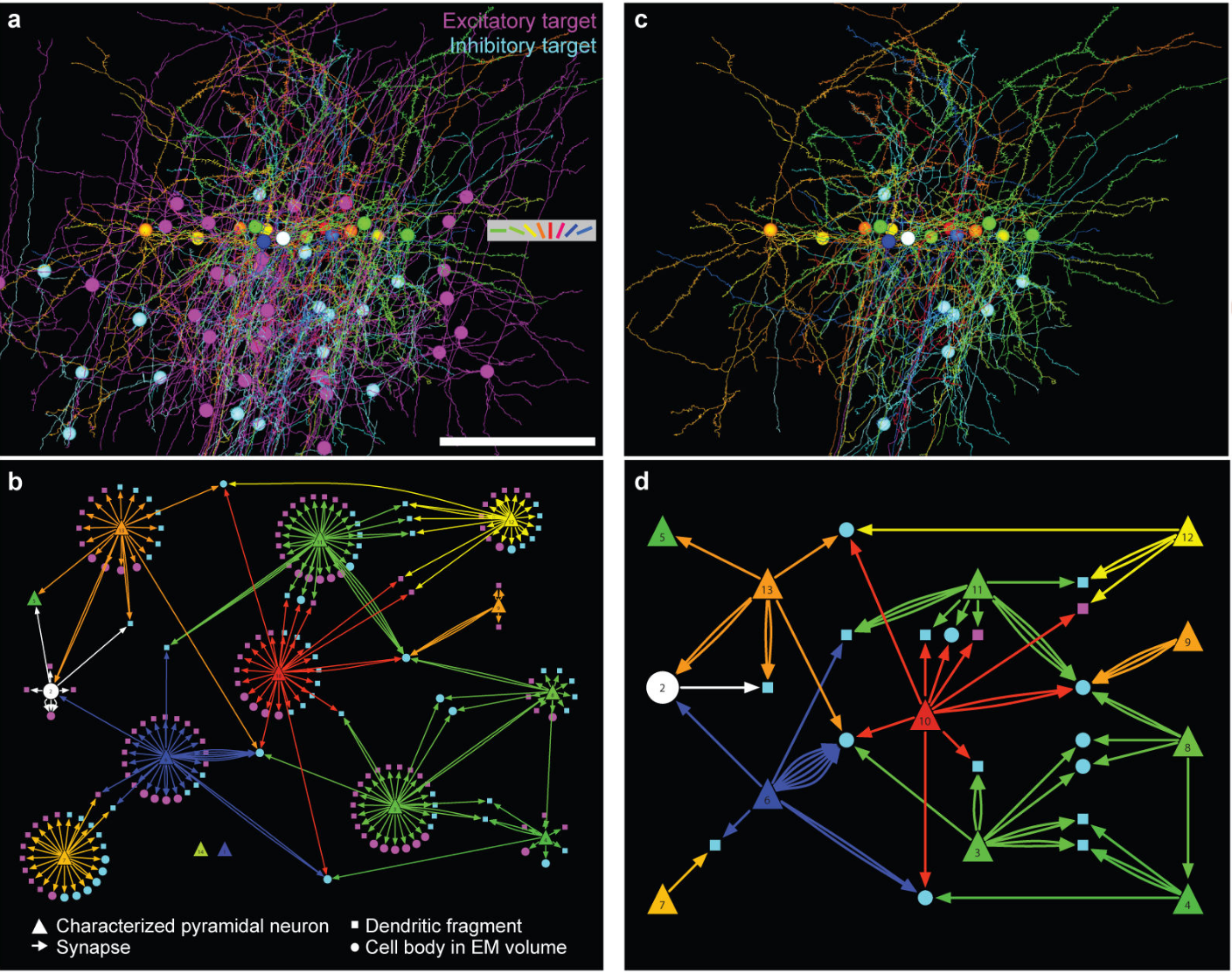
- combination of in vivo physiology and network anatomy
- mouse cortex
- custom TEM Camera Array
- 1,215 thin sections (40–45 nm), 450 μm x 350 μm sections
Re-analysis of legacy C. elegans data

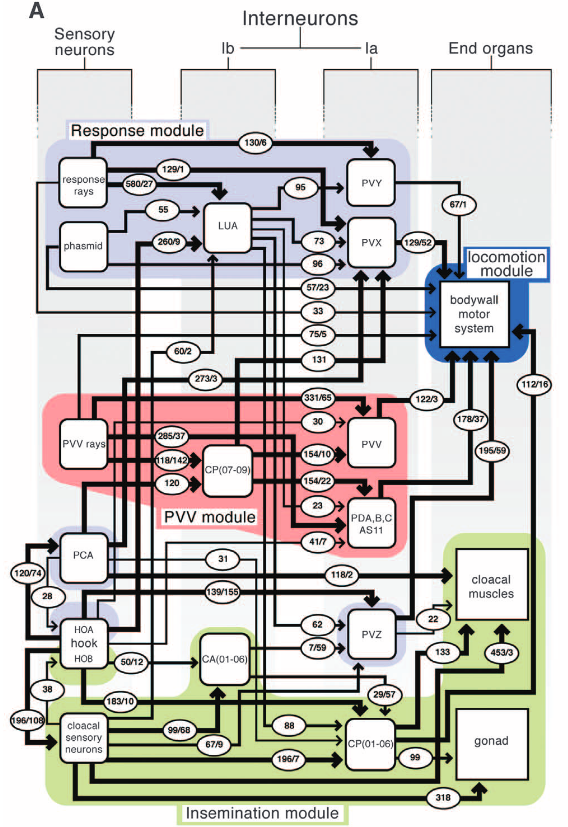
- posterior nervous system of adult male
- sexually dimorphic circuits for mating
- short synaptic pathways directly connecting sensory neurons to end organs
- reciprocal connectivity among sensory neurons
- interneurons acting in feedforward loops
Mouse inner plexiform layer
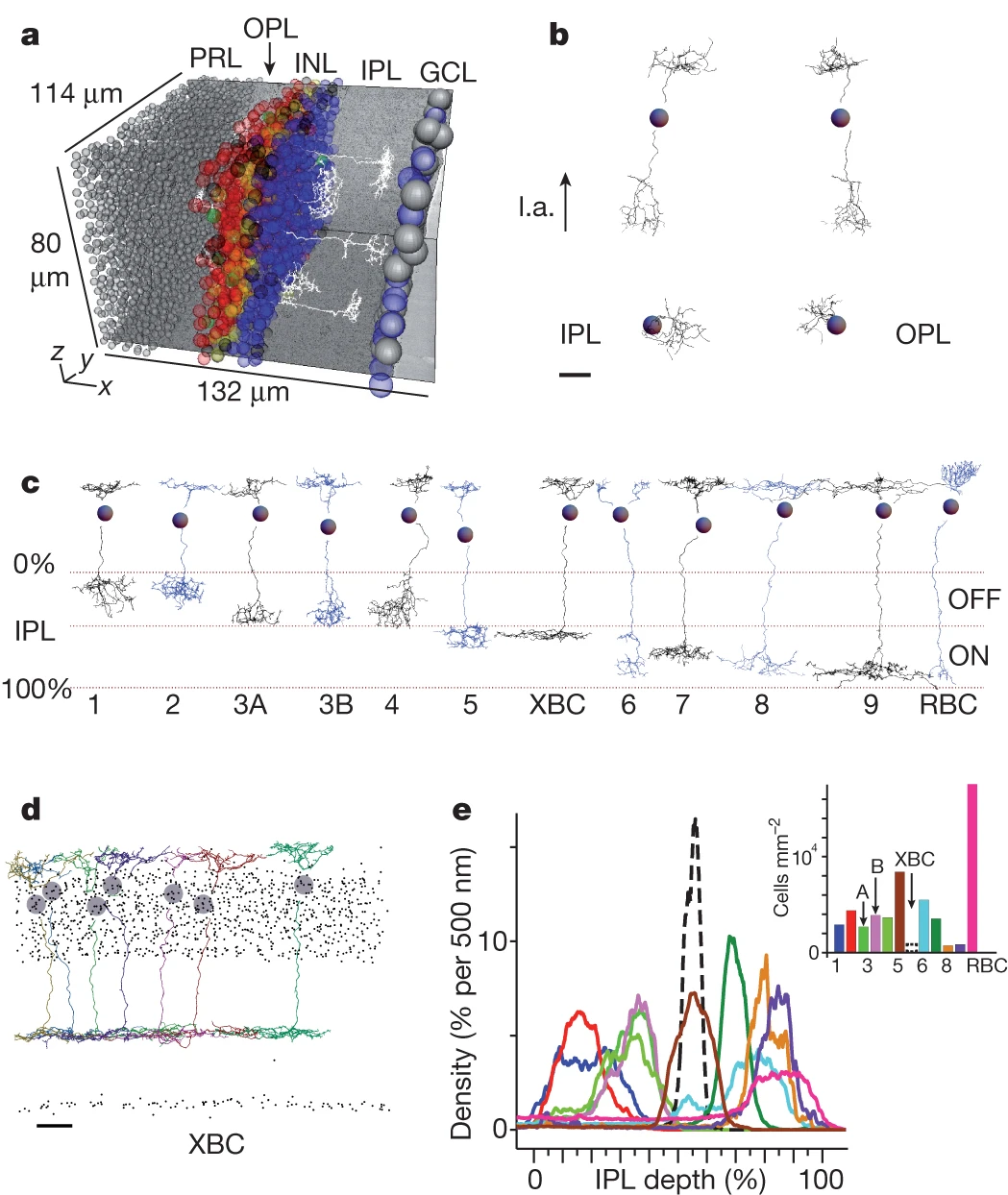
- mouse inner plexiform layer
- reconstruction of 950 neurons and their mutual contacts
- crowd-sourced manual annotation and machine-learning-based volume segmentation
Visual connectomes - fly medulla
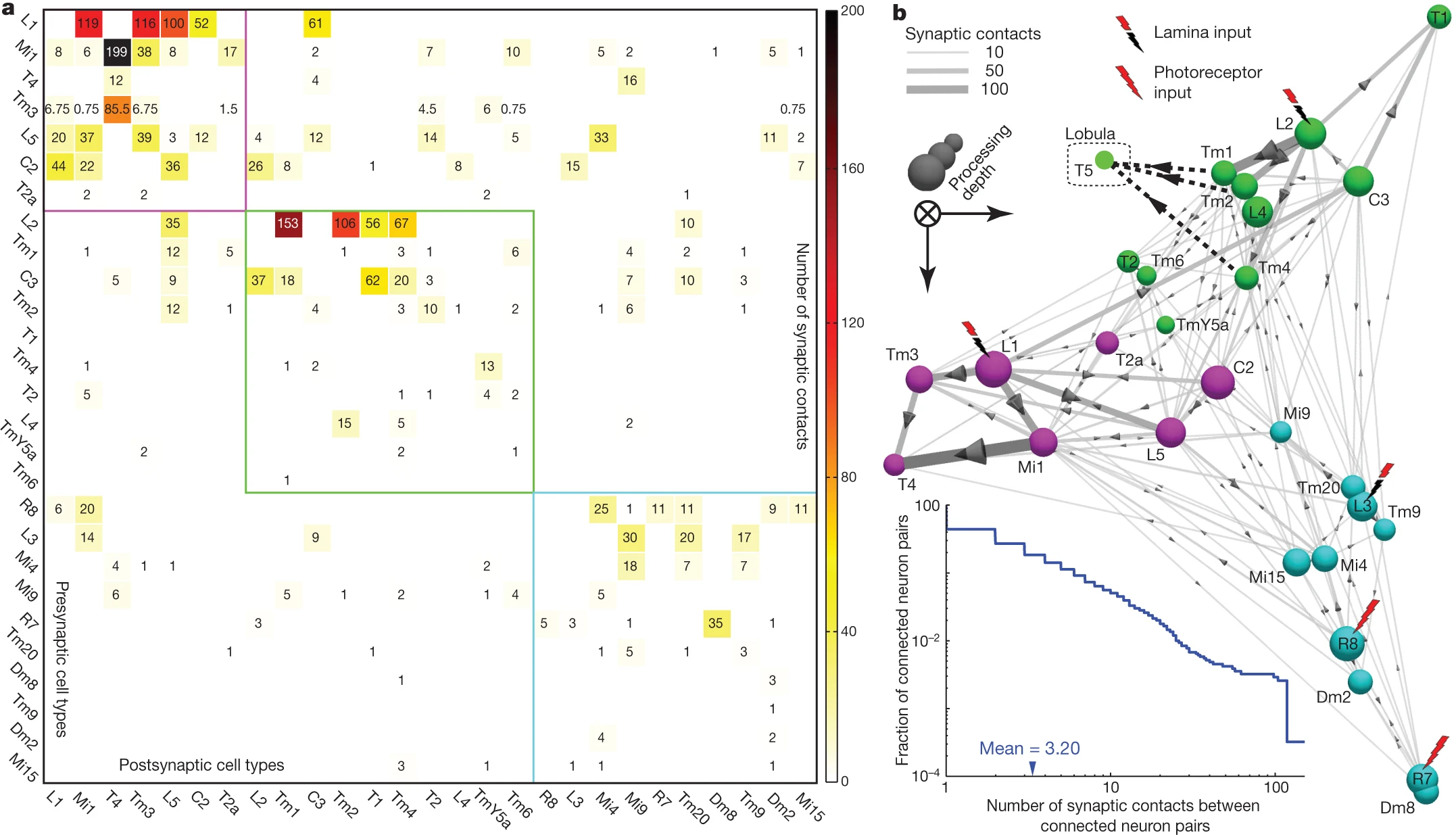
- fly medulla connectome as matrix and as graph
- reconstruction of the Drosophila optic medulla
- 379 neurons and 8,637 chemical synapses
- reconstruction of a motion detection circuit
The first complete visual circuit
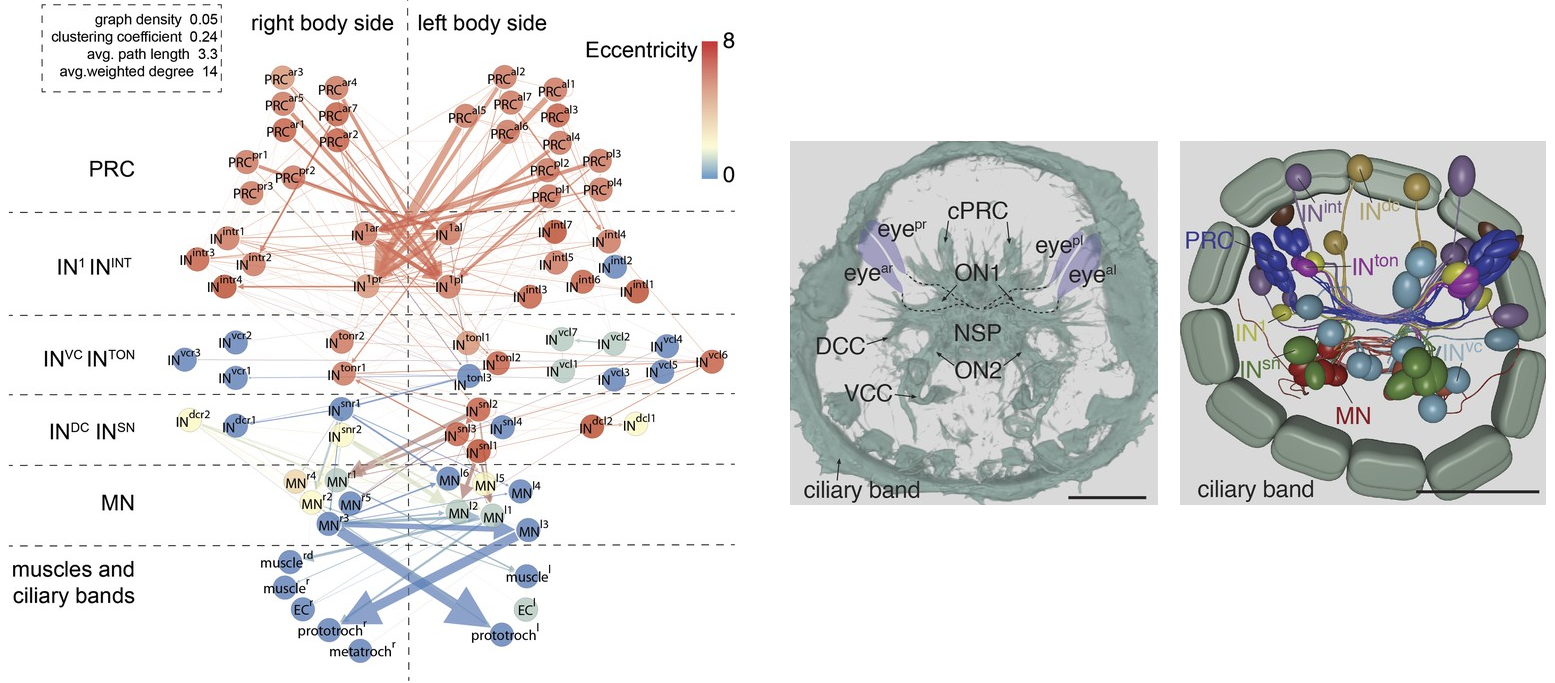
- neuronal connectome of a four-eye visual circuit in the larva of the annelid Platynereis dumerilii
- 71-neuron circuit from eyes to muscles
- circuit motif for contrast enhancement and left-right comparison of light
- spatial light detection during visual phototaxis
A volume of the Drosophila larval brain
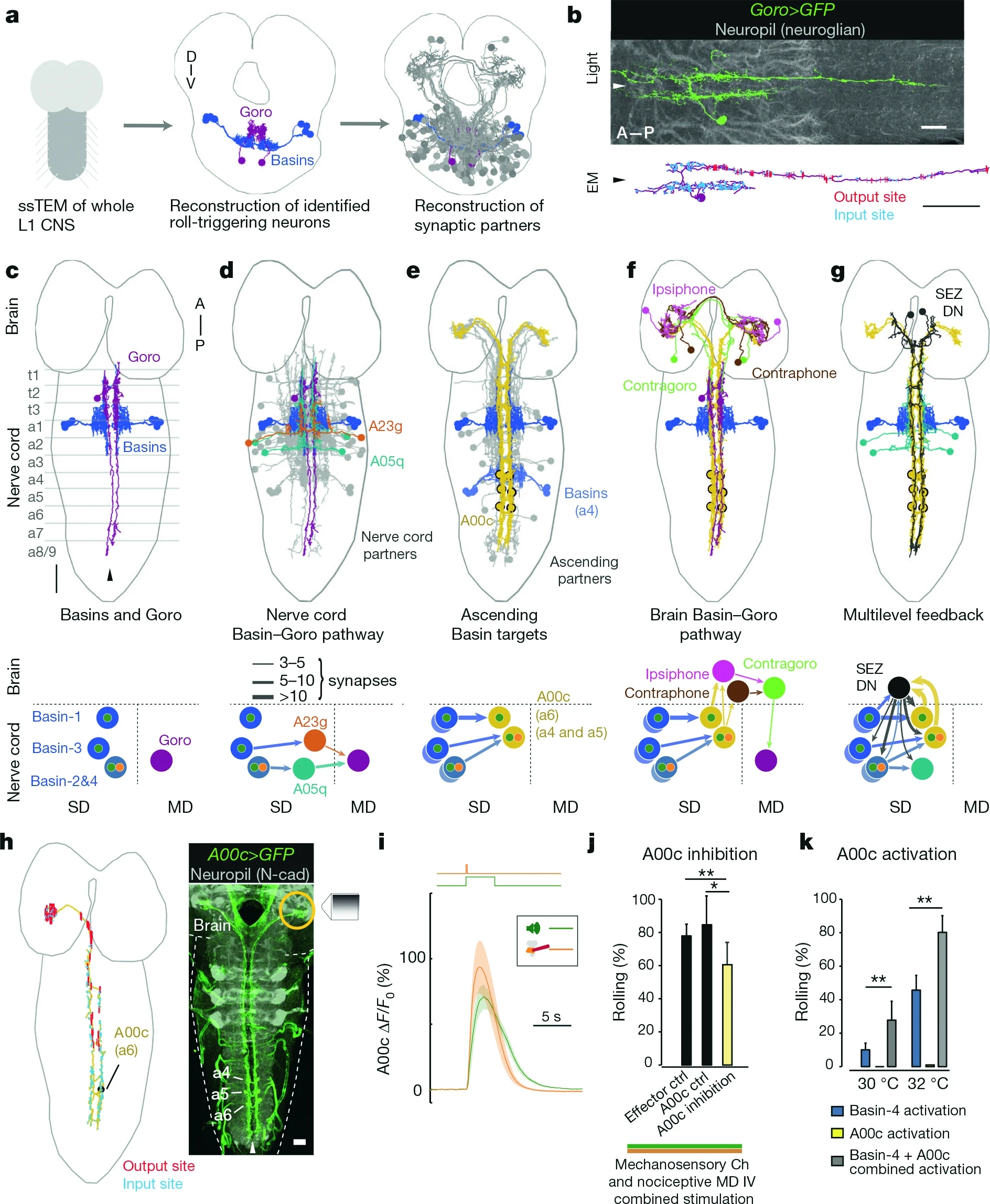
- an EM volume that spans the entire fly larval nervous system
- collaborative annotation by CATMAID
- many circuits mapped over the years on the same volume
The connectome of the Ciona tadpole larva
- Ciona intestinalis (ascidian) larva
- symmetrical undulations of the non-segmented tail
- simple nervous system
The connectome of the Ciona tadpole larva
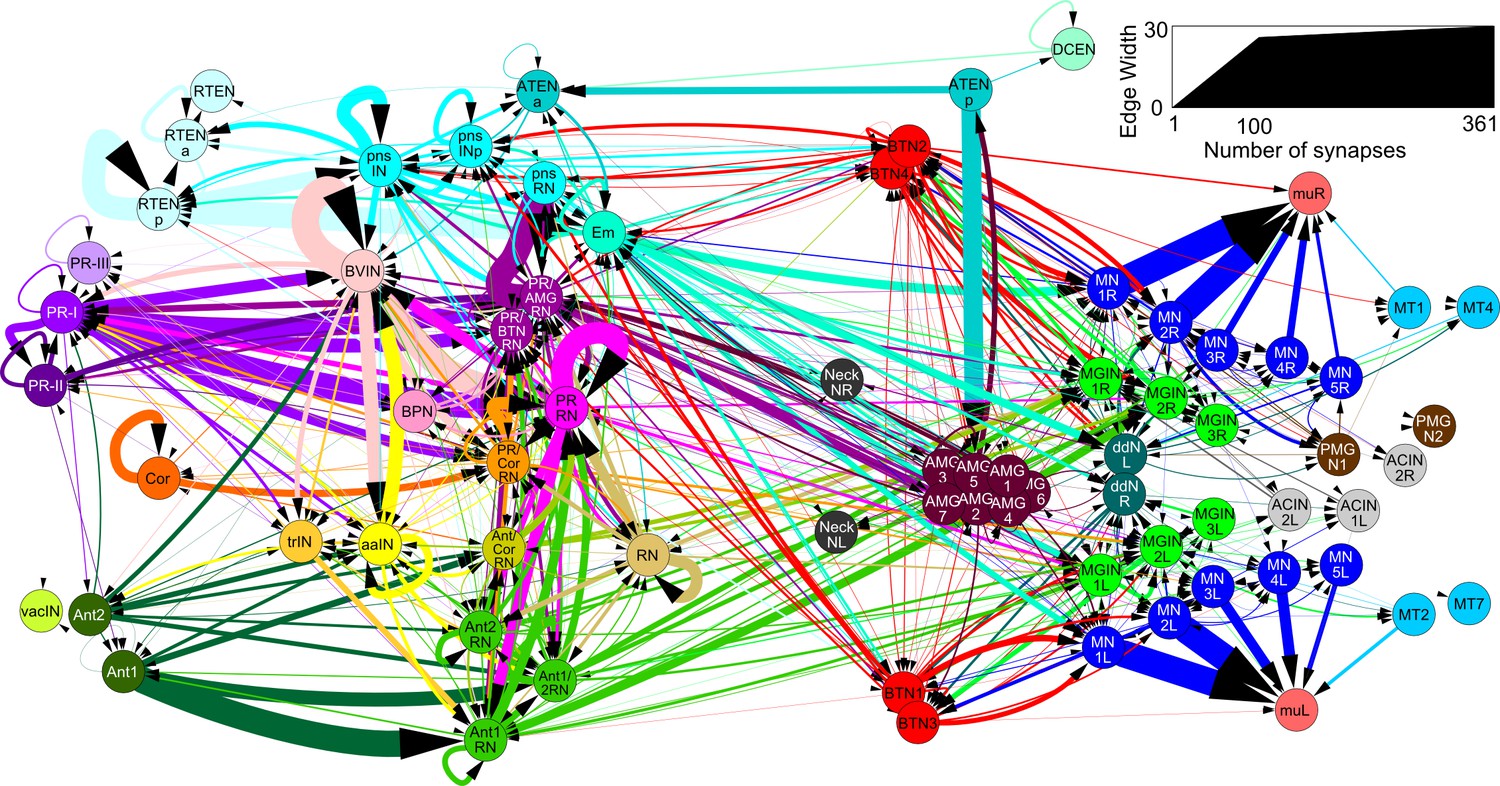
- total network of synaptic pathways
- grouped by cell type
- line width indicates the total synaptic number
- arrows indicate direction of synaptic connection
- 177 CNS neurons, 6618 synapses including 1772 neuromuscular junctions, 1206 gap junctions
- asymmetries (e.g. right ocellus, left coronet cells)
Connectome of both sexes of C. elegans
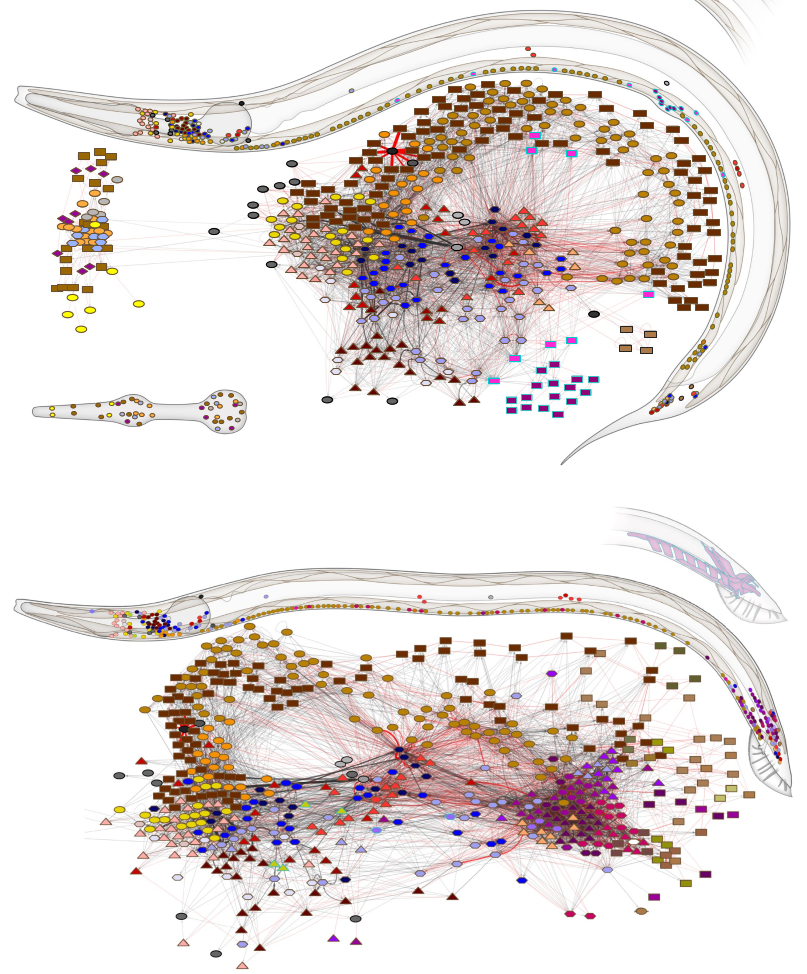
- both male and hermaphrodite whole-animal connectomes
- the nervous system differs between sexes at multiple levels
- several sex-shared neurons are sexually dimorphic
Developmental connectomics
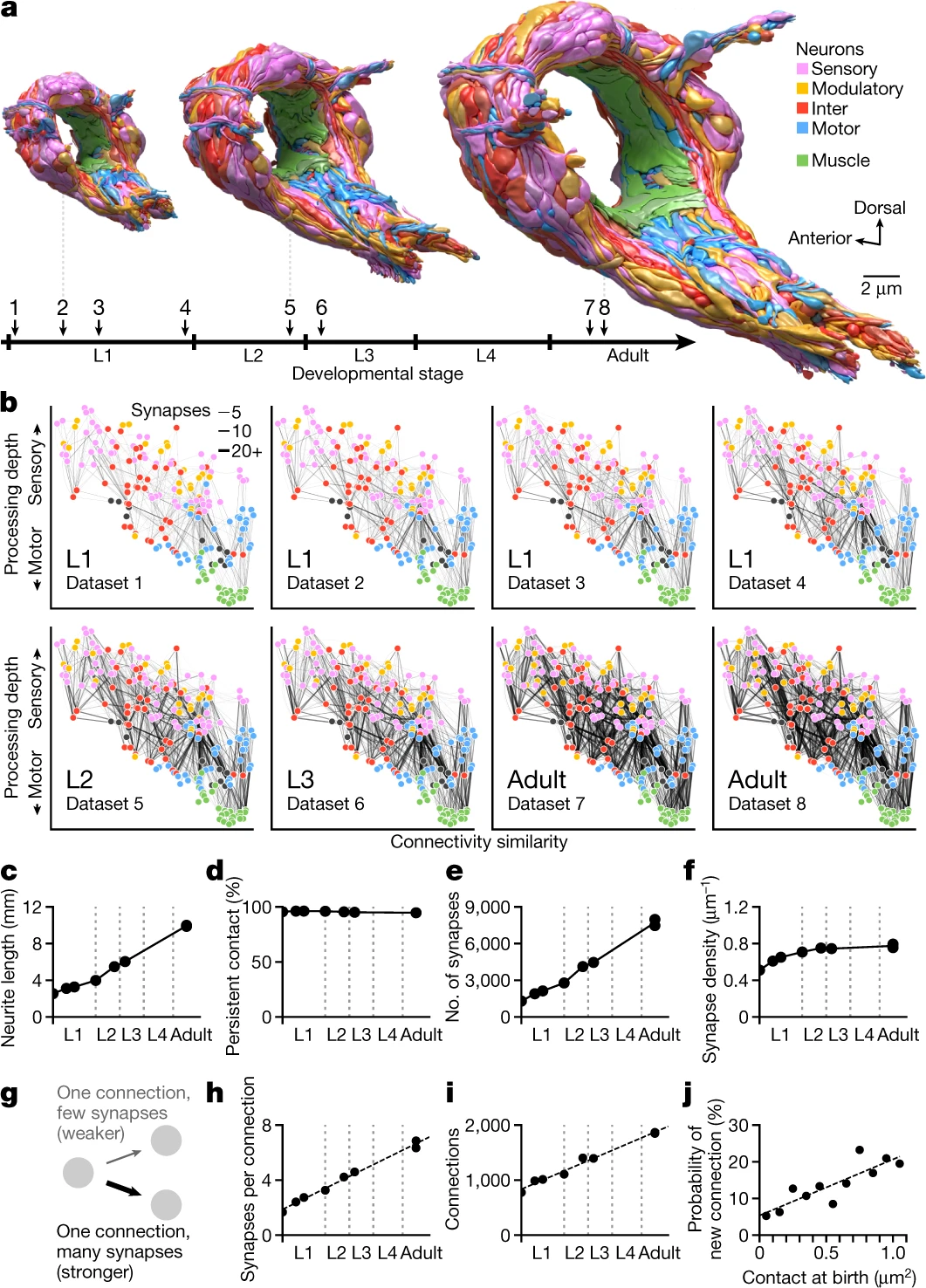
- full brain of eight Caenorhabditis elegans individuals across postnatal stages
- investigate how wiring changes with age
- connections become stronger, new connections appear
Enhanced FIB-SEM
- Focused Ion Beam Scanning Electron Microscopy (FIB-SEM)
- re-engineered commercial FIB-SEMs
- imaging speed improvement and error detection
- generating continuously imaged volumes > 10^6 µm^3
The fly hemibrain connectome
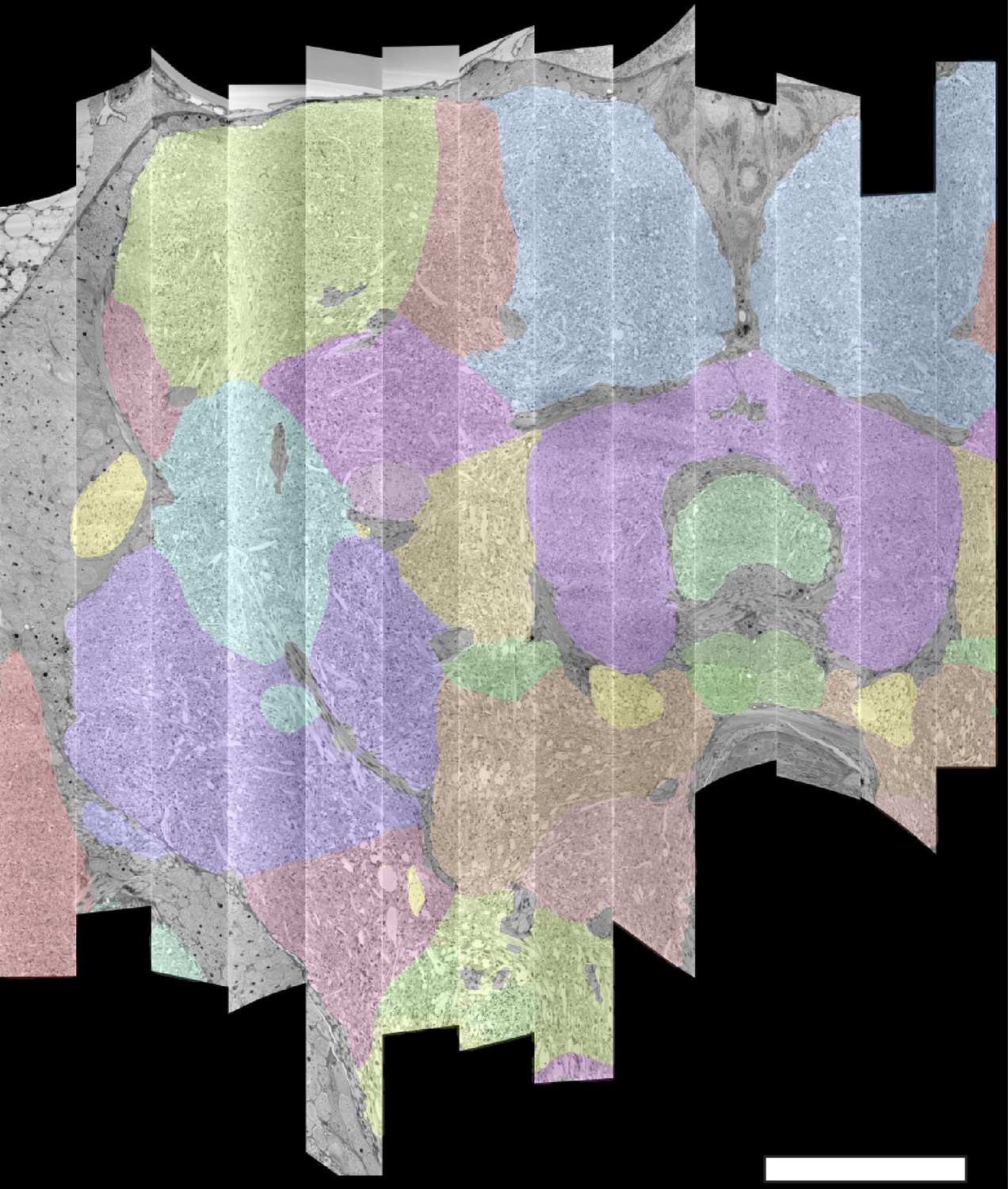
- ‘hot knife approach’ (slice the brain into 20-μm-thick slabs)
- central brain FIB-SEM dataset
- ~25,000 neurons and ~20 million connection
- half of the cell types newly identified
FAFB - a whole fly brain volume
- custom high-throughput EM platform
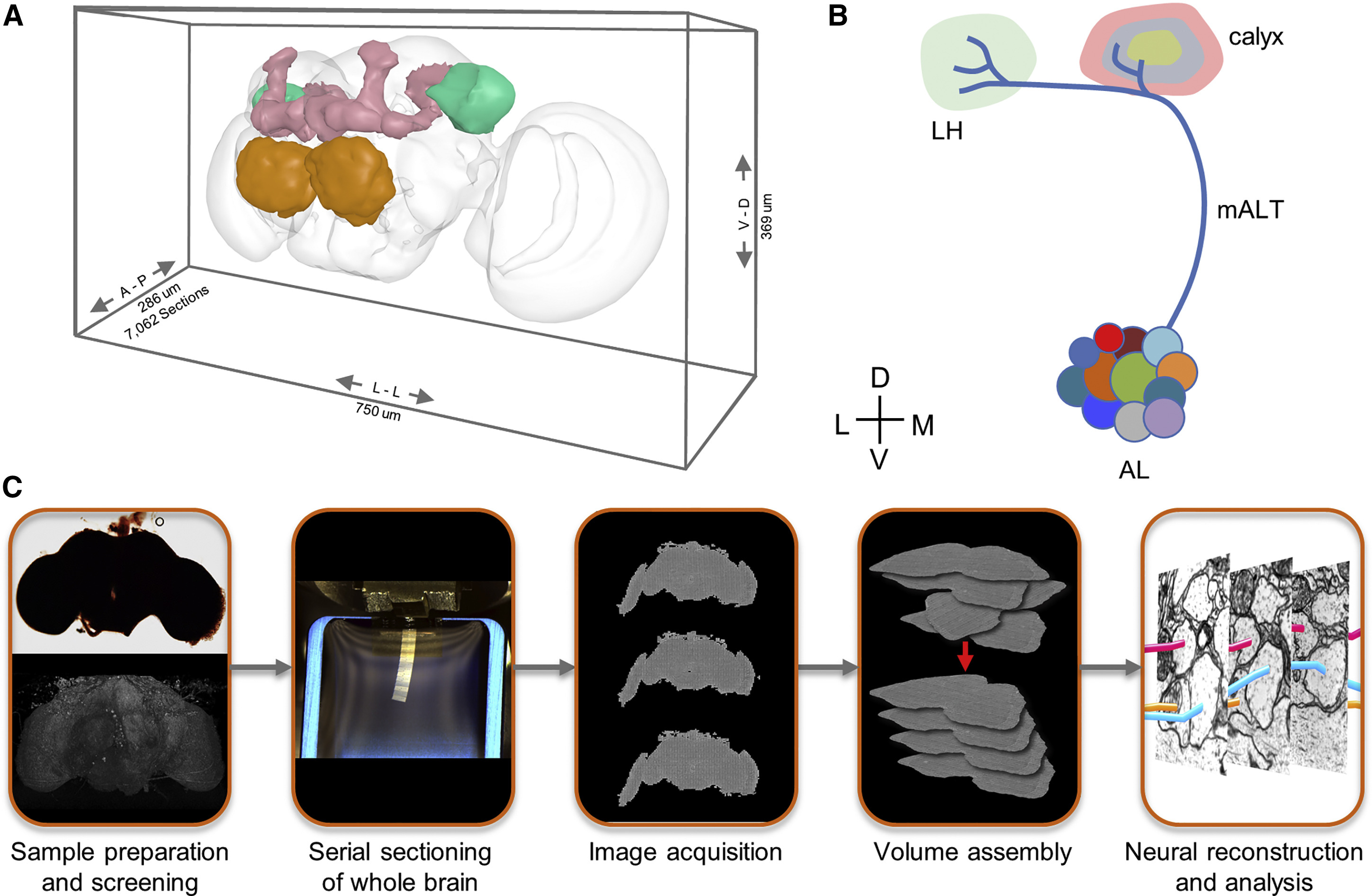
- serial sectioning and TEM imaging of a fly brain
- brain-spanning mapping of circuits at synaptic resolution
- 100,000-neuron adult brain
- https://catmaid-fafb.virtualflybrain.org/
Partial reconstructions in the FAFB dataset - olfactory system
- complete inventory of olfactory projections connecting the antennal lobe to higher-order brain regions
- the lateral horn is the main target for olfactory information
- many new PN cell types identified
Fly larva whole-brain connectome
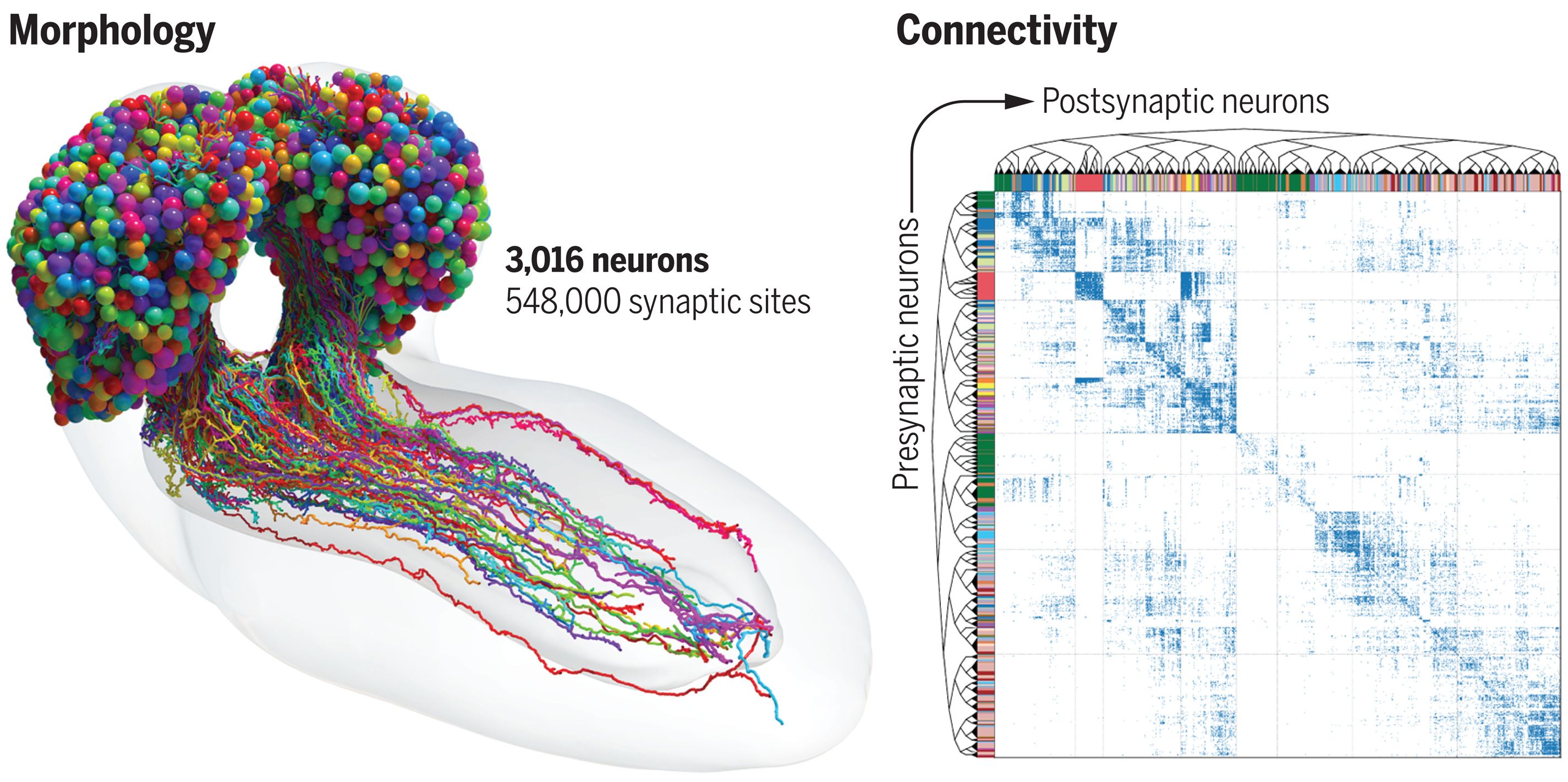
- Drosophila larval brain
- 3,016 neurons and 548,000 synapses
- 93 neuron types
- extensive multisensory integration
Whole-body three-segmented Platynereis larva
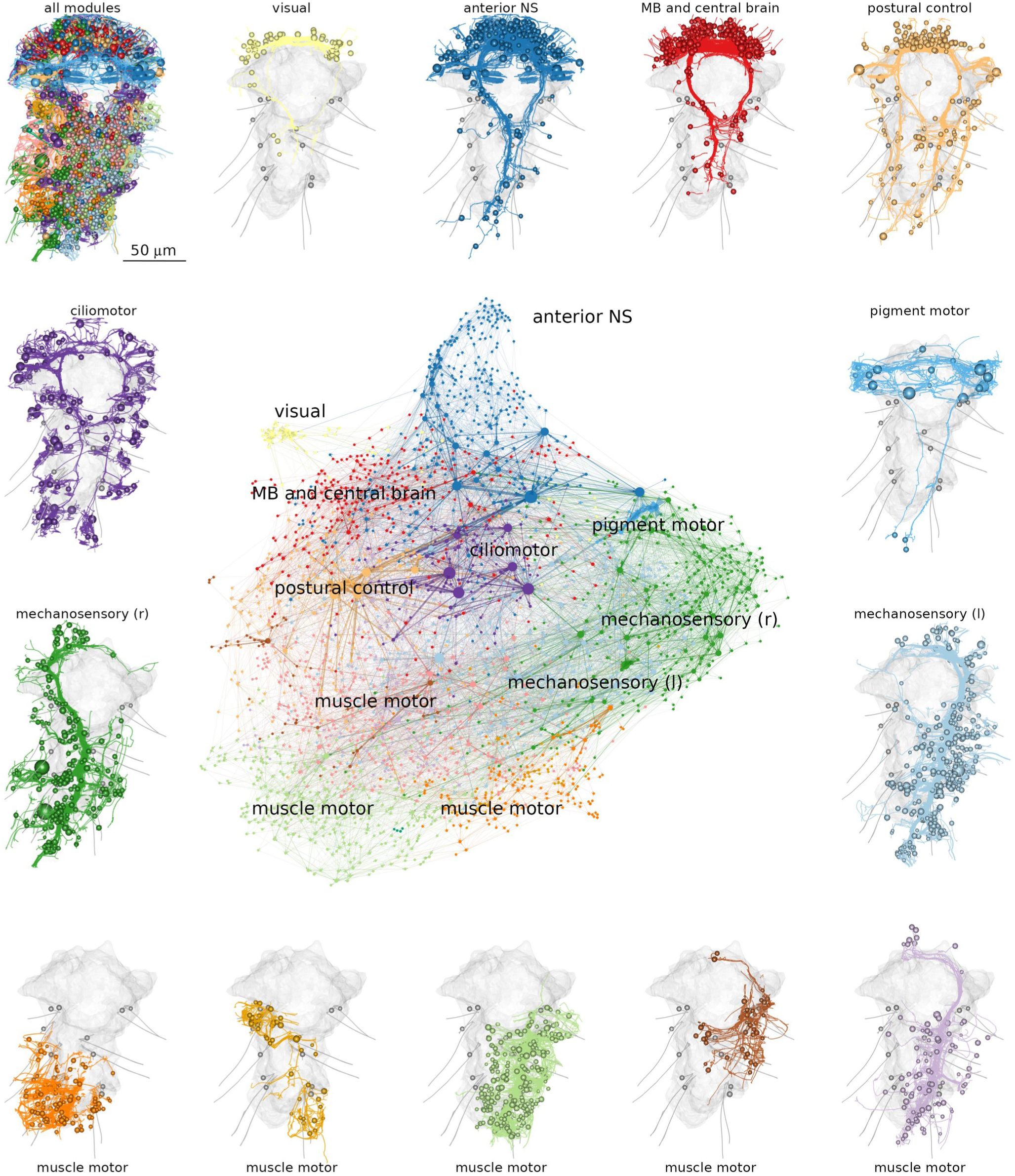
- Platynereis dumerilii three-segmented larva
- whole-body connectome
- ~2,000 neurons
- 202 neuronal and 92 non-neuronal cell types
Complete fly brain connectome
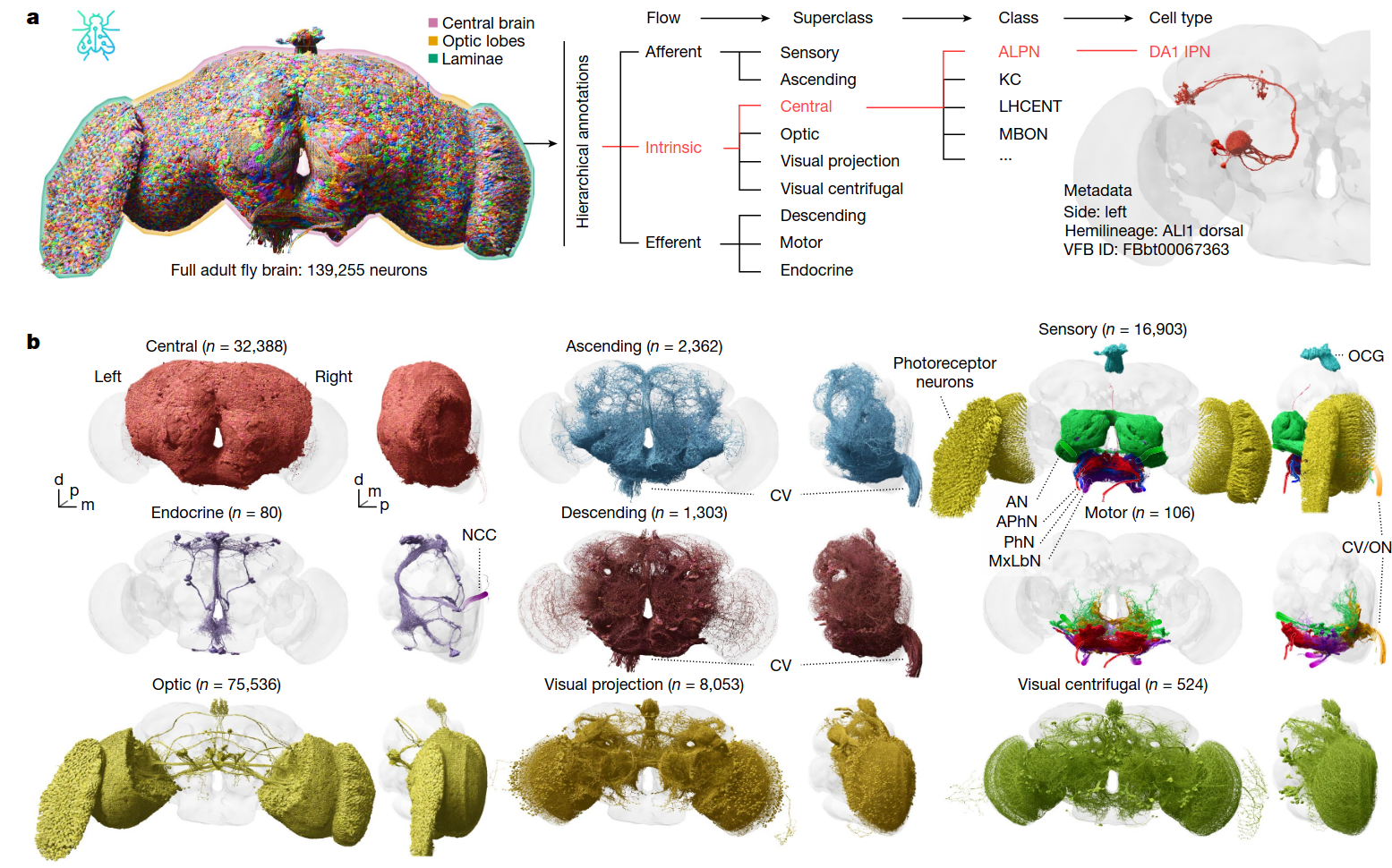
- 139,255 neurons
- hierarchical annotations
- 8,453 annotated cell types (3,643 were previously proposed in the partial hemibrain connectome)
- available in CATMAID (https://fafb-flywire.catmaid.org/)
Complete fly brain connectome
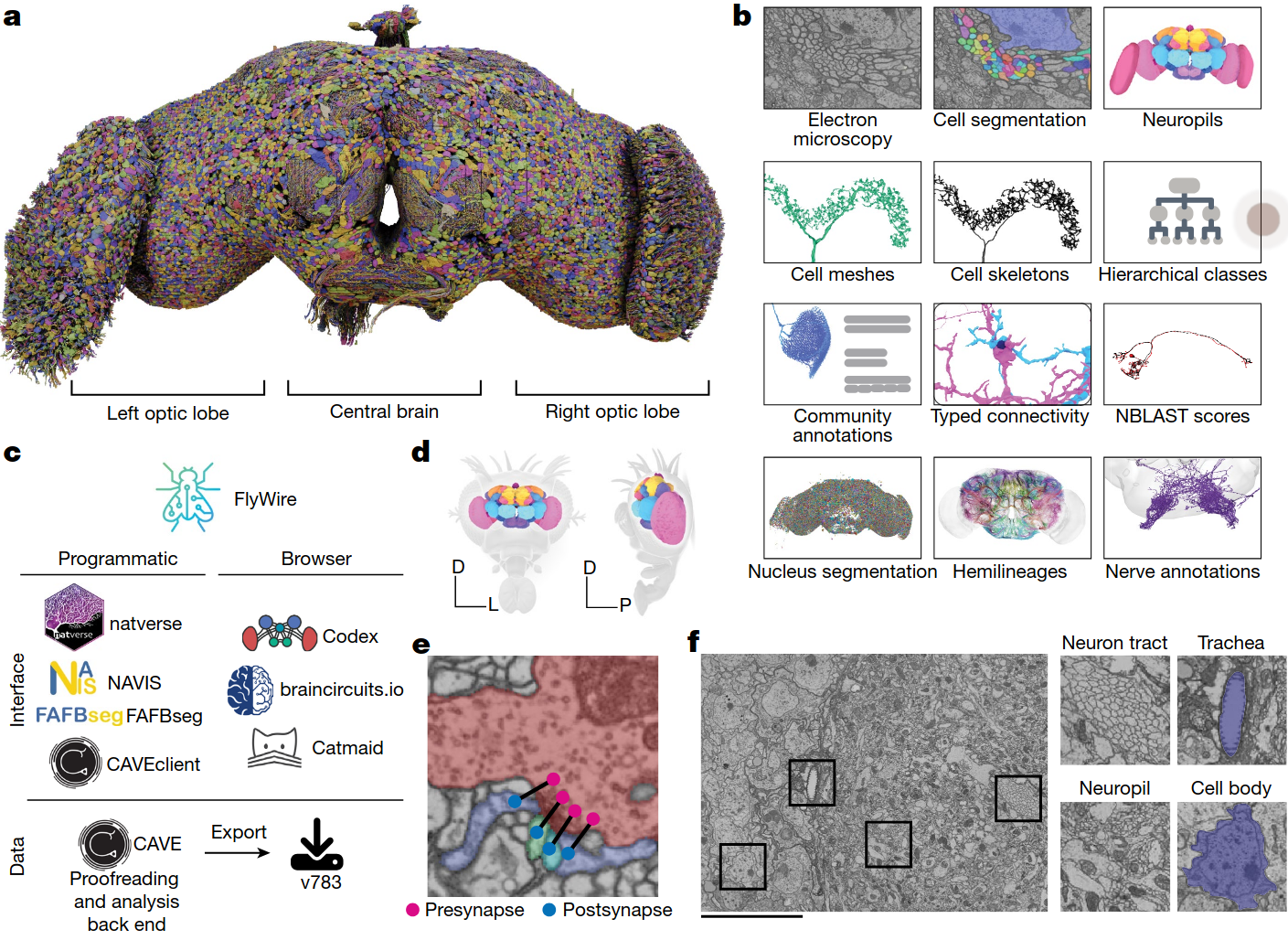
- adult female Drosophila melanogaster
- full reconstruction of the FAFB dataset
- FlyWire Consortium, over 200 scientists contributed
- principle of openness: “similar approaches based on an open ecosystem will enable connectomics to scale more efficiently, economically and equitably”
Octopus connectomics
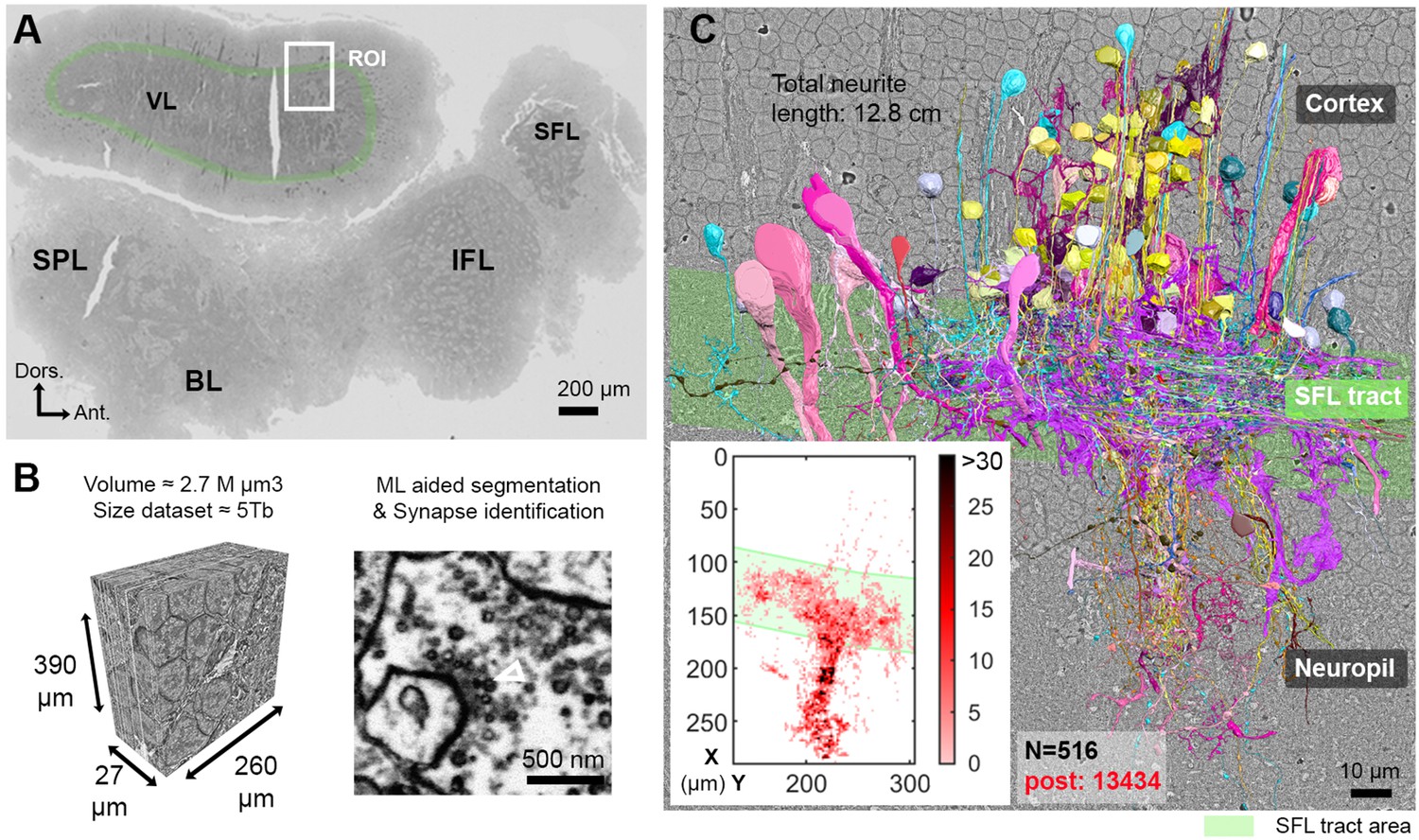
- Octopus vulgaris vertical lobe (memory center)
- small volume of 892 serial sections
- unique circuit architecture for associative learning based on feedforward information flow
The brain of a mini-wasp
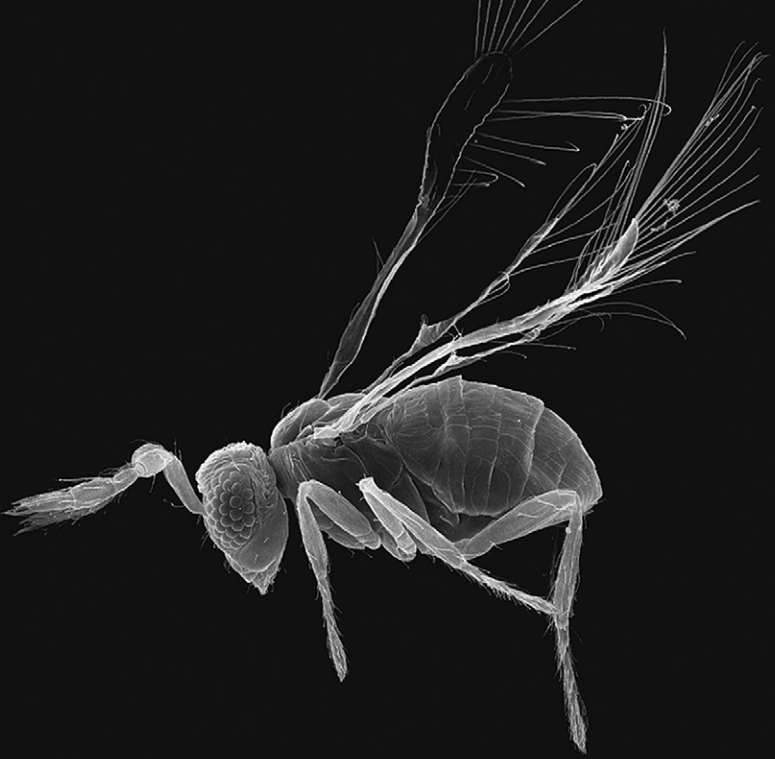
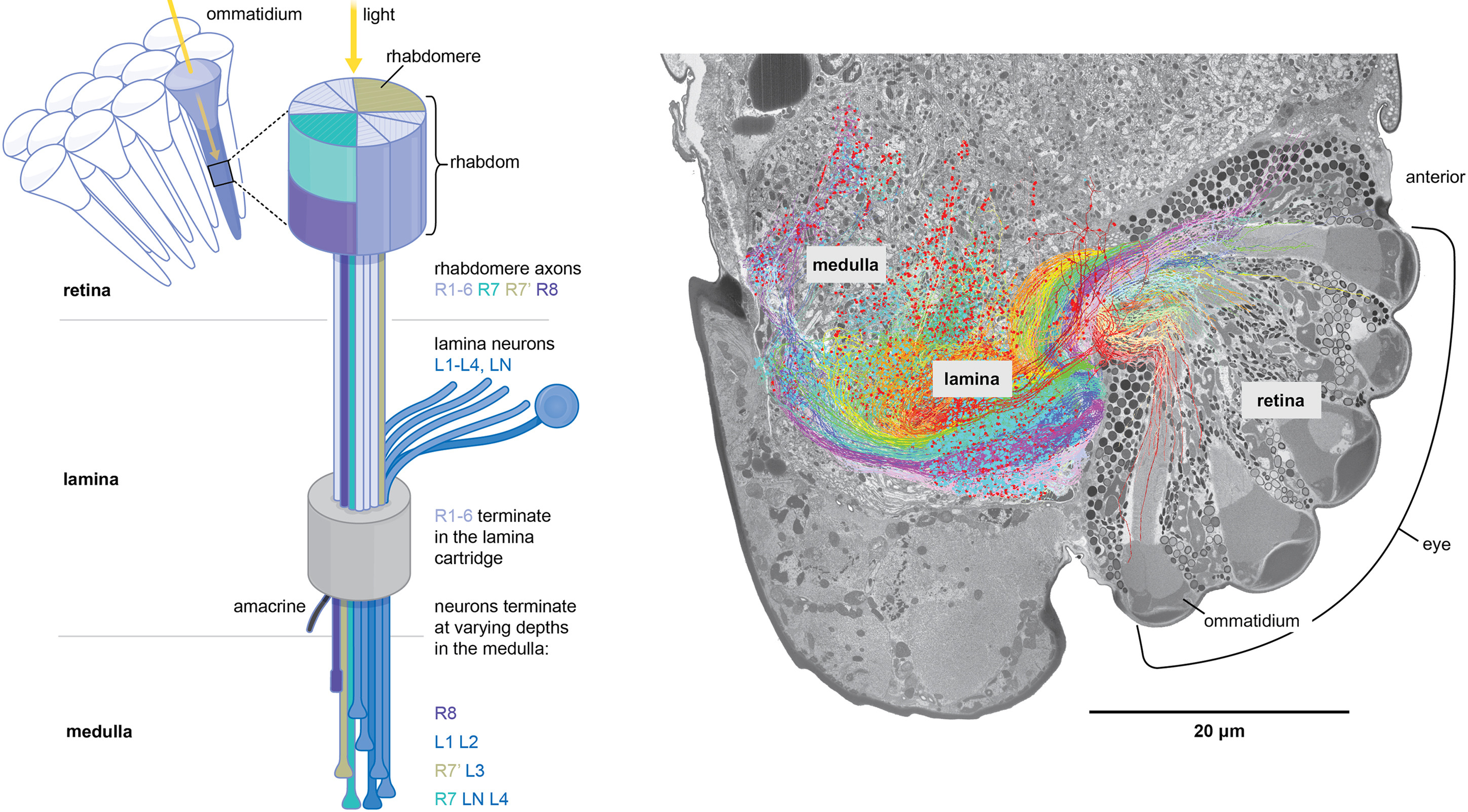
- microinsect Megaphragma viggianii
- highly simplified visual system
- denucleated neurons
The Mind of a Mouse
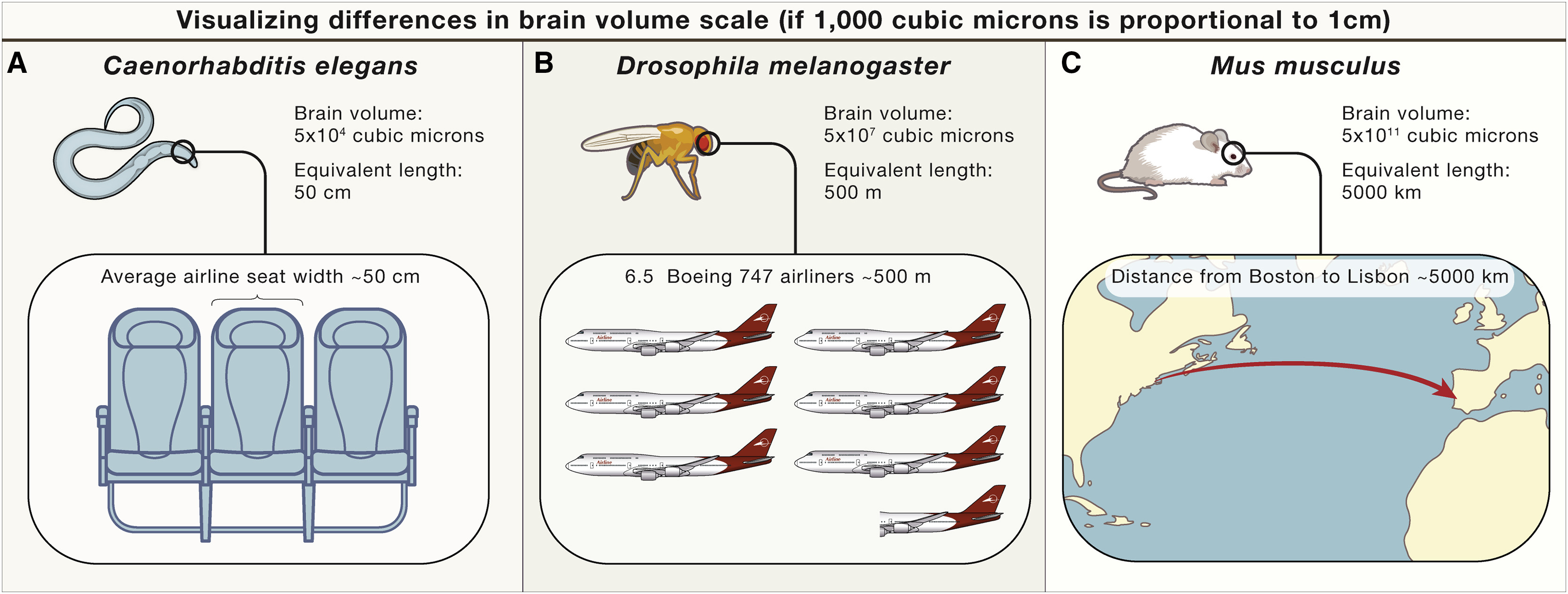
- Each 1,000 cubic microns of brain volume is schematically represented by a 1 cm linear distance.
- ~1 cm3 (125,000x larger than a Platynereis larva)
- ~1 million terabytes of data will need to be acquired and analyzed to provide a complete mouse brain connectome
The importance of openness
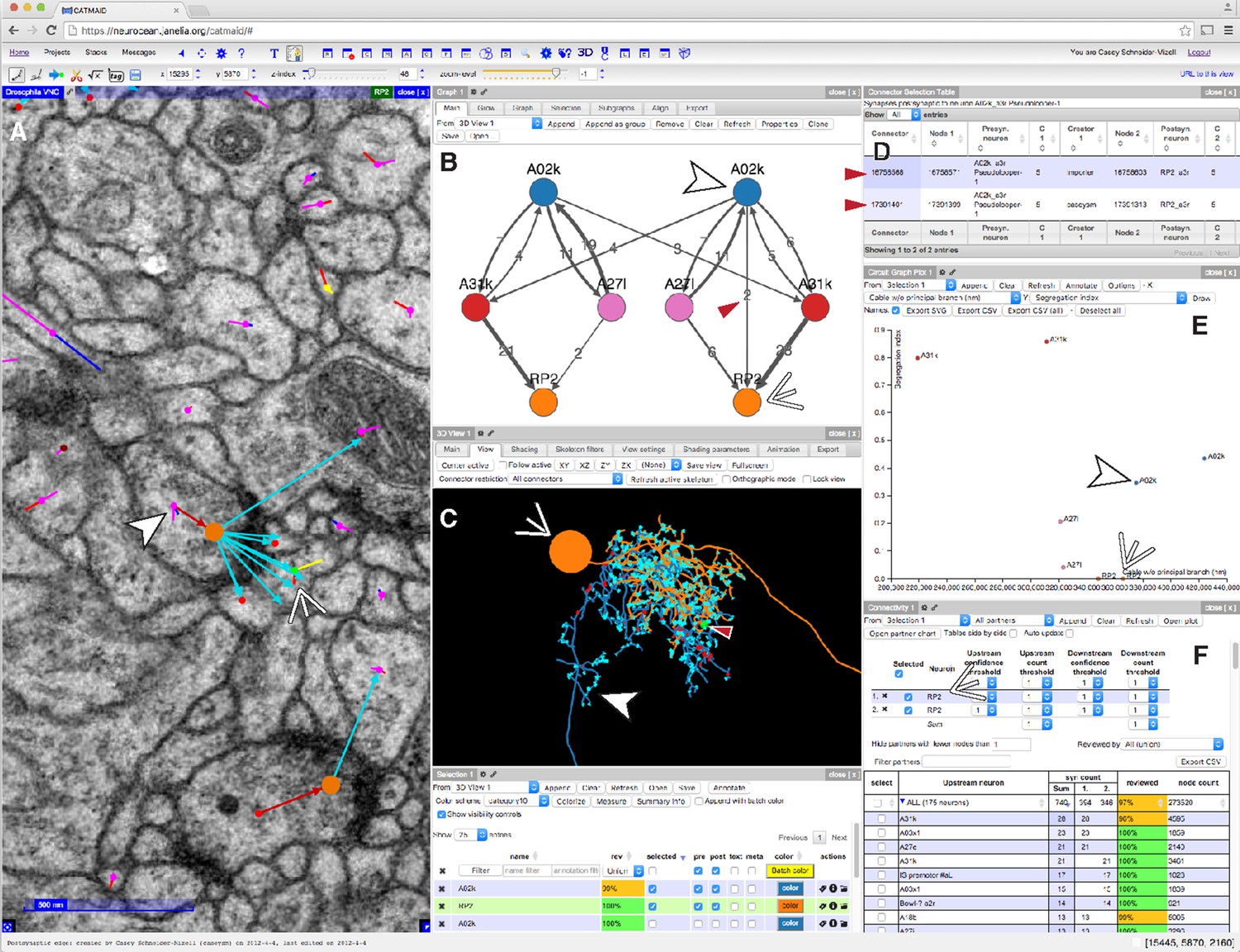
- ZooCELL volumes should be released as soon as they are acquired and aligned (short data papers)
- collaboration via online tools
- better annotations, faster progress
- rely on communities of experts
- fly larva and FlyWire are good examples
